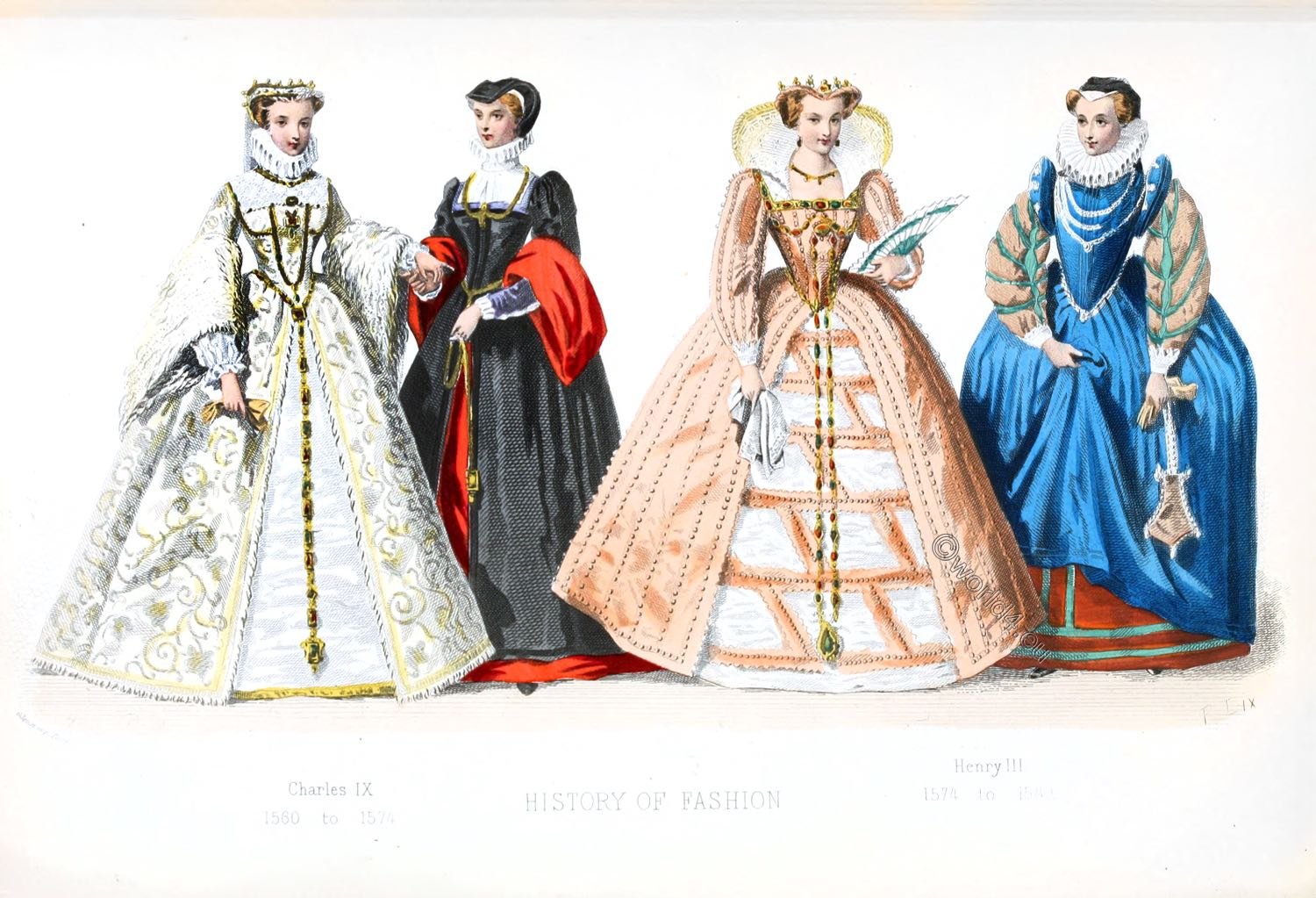
16th century fashion, 16th century clothing, Historical costume
A t the start of the sixteenth century, women dressed as they had for much of the fifteenth century, though changes were slowly introduced. The foundation of a woman's outfit was her smock/shift/chemise, which was made of linen and easily washed. Blackwork or other colored embroidery was commonly applied to chemise necks, fronts, and wrists.

16th century clothing by Prior Attire Renaissance fashion
Fashion in the period 1550-1600 in European clothing was characterized by increased opulence. Contrasting fabrics, slashes, embroidery, applied trims, and other forms of surface ornamentation remained prominent.

16th century Peasant 16th century clothing, 16th century fashion
Sixteenth-Century Clothing The sixteenth century was one of the most extravagant and splendid periods in all of costume history and one of the first periods in which modern ideas of fashion influenced what people wore.

Pin on Frills and Crinolines
The Cut of Women's Clothes 1600-1930 by Norah Waugh. Patterns and Fashion 1 : Englishwomen's Dresses and Their Construction 1660-1860 by Janet Arnold. A Visual History of Costume in the 17th Century by Valerie Cummings. Handbook of English Costume in the 17th Century by C. W. Cunningham and P. Cunningham

The Princess of Montpensier Renaissance Mode, Renaissance Fair Outfit
Queen Elizabeth of England, showing the queen adorned in Renaissance fashion with pearl choker and pendant and a series of longer necklaces, portrait in oil by an unknown English artist, 16th century; in the Pitti Palace, Florence. (more)

Tudor England clothing 1550 to 1580, 16th century. Costume History
Sir Francis Drake, 1540-96, National Maritime Museum. Rich men wore white silk shirts, frilled at the neck and wrists. Over this they wore a doublet (a bit like a tight-fitting jacket), and close-fitting striped trousers (called hose). Heavily starched and elaborately pleated ruffs were fashionable throughout the period.

Ancient European fashion and lifestyle, 16th century q4 Photograph by
The lady's bodice is long-waisted and her over skirt is draped and pinned up behind, Dutch, 1678. Fashion in the period 1650-1700 in Western clothing is characterized by rapid change. The style of this era is known as Baroque. Following the end of the Thirty Years' War and the Restoration of England's Charles II, military influences in men's.

Regional variations in fashionable clothing that arose in the 15th century became more pronounced in the sixteenth.

274 best 17th Century Fashion images on Pinterest Historical costume
OVERVIEW The first decade of the 17th century saw a continuation of many Elizabethan trends, with small changes in skirt length, sleeve shape, and collar types slowly being introduced. Womenswear

16th century costume and fashion history. European renaissance.
To modern eyes, Elizabethan clothes seem rather stiff and heavy but we should remember that in 16th century CE England and in the absence of adequate indoor heating just about everywhere, the best way to keep out the cold was one's wardrobe. Follow us on YouTube!

16th Century Mans suit of clothes and hat made for client for the
The late 16th century's fashion is characterized by its Spanish influence, and as a Spanish Prince, Don Carlos exhibits the height of the time's fashion. 1560-1569 The stiff formality of 1560s womenswear, achieved through boning and high ruffs, was met by equally high collars on men, who also wore increasing pumpkin-sized melon hose and.

Fashion streetsofsalem 17th century fashion, 16th century fashion
Spanish fashion was ascendant in the 1550s, from the loose women's gown—the ropa —and the Spanish farthingale in women's dress to the narrow-cut jerkins and tight sleeves of Philip II and the must-have men's outerwear piece, the Spanish cape. Womenswear T he trends of the late 1540s continue in the early 1550s.

costumes, fashion, clothing, 15th and 16th Century, Historische
Costume and Fashion in Colour, 1550-1760. Introduction by Ruth M. Green. Dorset, England: Blandford Press, 1975. Cosgrave, Bronwyn. The Complete History of Costume and Fashion: From Ancient Egypt to the Present Day. New York: Checkmark Books, 2000. Jones, Ann Rosalind, and Peter Stallybrass. Renaissance Clothing and the Materials of Memory.

Bloomsbury Fashion Central This ensemble demonstrates fashionable
The second decade of the 16th century featured broad-shouldered silhouettes for men and women, paired with immense sleeves (except for women in Germany, who retained narrow sleeves). Slashing, pinking, paning and other decorative fabric treatments like blackwork embroidery were increasingly common. Womenswear

Dunkel blau Taft Renaissance Kleid 16. Jahrhundert Italien Etsy
Founded in 2001, The Tudor Shoppe provides reproduction Tudor Era (1485-1603) Renaissance and medieval clothing and Elizabethan costumes to individuals, stage productions, television shows, museums, historic sites, educational institutions, and re-enactment societies. Our goal remains clear: to offer quality goods at the best price possible price.

Florentine School, late 16th Century Old Master Paintings 2016/12/19
21st Pages in category "16th-century fashion" The following 58 pages are in this category, out of 58 total. This list may not reflect recent changes . 0-9 1500-1550 in European fashion 1550-1600 in European fashion A Attifet Aura Soltana B Bacton Altar Cloth Beaver hat Bodice Bone (corsetry) Boyar hat Bycocket C Cap hook Capotain Cavalier boot